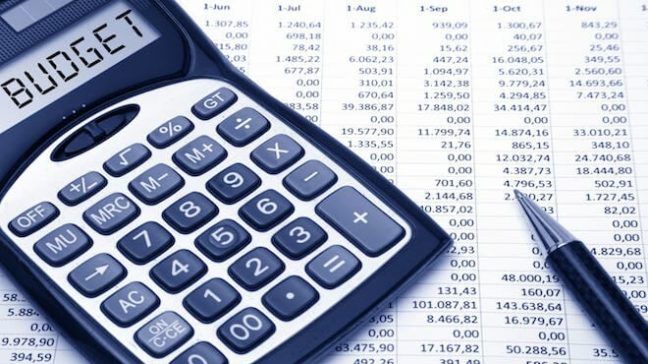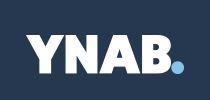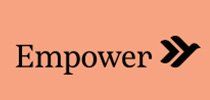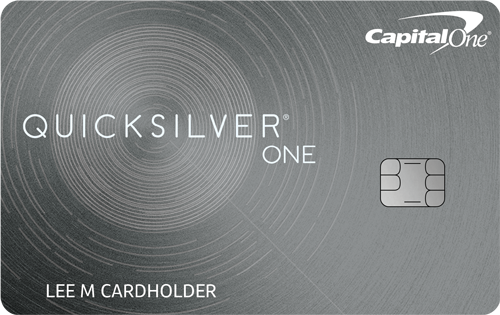You finally have financial independence. You can spend your money on the things you want, and that’s exciting. But with that freedom comes more serious questions, like:
- Am I spending too much a month?
- Am I doing this right?
- Should I be saving?
- Do I have to feel guilty every time I buy a fancy cocktail?
Creating a budget helps answer those questions and more. Believe it or not, giving yourself a financial framework actually grants you more flexibility, more money to spend, and fewer anxieties to worry about.
What’s Ahead:
Why you should start budgeting in your 20s
Saving early means earning more out of every dollar
It doesn’t matter how big or small your paycheck is. The earlier you start saving, the more you’ll earn later on. This is because of a little something called compound interest.
Here’s the idea: when you invest your money early, you don’t just earn interest on that investment, but over time you also earn interest on your interest. The more time you let your investment grow, the more you squeeze out of each dollar.
Here’s a simple example
At 22 years old, Bill invests $200 into a mutual fund that offers a 5% return. He continues investing $200 every month and by the time he turns 65 years old, his investment earns him $363,945.99.
Let’s compare this to George, who follows the same investment plan, but starts at 30 years old. When George turns 65, his investment is only worth $228,365.23. Those eight measly years that Bill had on George helped him earn a whopping $135,580.76 more.
The key is to give your money time to maximize interest. You don’t have to start big. You just have to start.
Budgeting prepares you for future “adulting”
Captain Obvious quote of the day: don’t start saving for a home at the exact time you want to buy a home. You may not be thinking about diapers and homeownership, but you might later on. Starting to save earlier means giving yourself a smaller financial burden when that time comes. It’s also important to learn how to stick to a budget so that you’ll be set for when your finances become a little more complicated.
Afford the lifestyle you want now
Your twenties are the best time to do the things you want to do when you’re still young and free of major responsibilities. With a spending plan, you’d be surprised at how much you can squeeze out of your income.
Tracking your spending helps identify areas for improvement so that you can spend less on things you don’t need and put that money towards something better. Like that sweet trip to Spain you’ve been thinking about.
Go debt-free faster
Get rid of that looming debt anxiety for good. Budgets make it easier to pay off your debt without putting stress on your paycheck. You can check off that list much sooner by making it a routine to save a little bit every month.
Less stress when dealing with unplanned expenses
Life happens. And that means emergency dental appointments, car problems, a leak in your roof – you get the idea. Budgets help make sure you always have extra funds cached for those unexpected incidents.
You shouldn’t have to waste money on high-interest loans or awkwardly grovel to your parents or friends. No one wants to see that.
How do I start budgeting?
Budgeting is important, but it doesn’t have to be complicated. Get your budget started with these six simple steps.
Figure out your monthly income
Gather all your income sources into one place. How much are you taking home a month after taxes?
- If you get paid every other week: multiply your paycheck by 2.166.
- If you get paid weekly: multiply your paycheck by 4.333.
- If your income fluctuates: you can average several months of income. Just try to be as conservative as possible.
Track and categorize your average monthly spending
Keep it simple. Start with last month’s total expenses. Gather all your bills and receipts and figure out how much you’re actually spending per month.
Break down your spending into categories that make sense for you. For example: living expenses, transportation, subscriptions (like Spotify or Netflix), groceries, medical, debt payments, entertainment. This helps identify unexpected areas that may be hemorrhaging money.
Set a goal
Getting on the right financial track is a great objective, but it’s important to work towards something concrete. This helps motivate us to be diligent and consistent with our budgeting.
What if I don’t have a goal?
Make one. A great first goal is creating an emergency fund for unplanned expenses.
Some other possible goals:
- Short-term goals: saving for a trip or a new couch.
- Medium-term goals: saving for a car, becoming debt-free.
- Long-term goals: saving for retirement or paying off your mortgage.
Set your financial framework
Start by weighing your expenses against your net monthly income. How much wiggle room do you have? What are your goals? What spending categories can use improvement?
Start setting ideal budget goals for each category. Be honest with yourself and your lifestyle. If you enjoy going out for dinners or drinks with friends, include that in the budget as well.
You can use this simple budget worksheet to keep track of spending.
Overwhelmed yet? That’s okay. There are tons of tools designed to make it easy to create and manage your ideal budget. An app like MoneyPatrol, for example, can be a great way to learn your own spending habits. You’ll set a budget each month, along with a spending goal for each category. MoneyPatrol links to your financial accounts to track your expenses. You’ll even get alerts when you go over your limit in a category. Over time, you’ll know enough about your own spending habits to be able to more accurately set a budget.
Tweak. Repeat.
Keep in mind that our spending habits and income change. Make sure to adjust your budget accordingly. Also, make sure that your budget is actually sustainable. If you’re finding it difficult to stay within that framework, then change it. Be realistic with yourself.
Budgeting resources: what can I use to make budgeting work for me?
Put down that Excel spreadsheet for Dummies. There are tons of resources for any type of budgeter – whether you want to do it all yourself or leave it to the professionals. Try as many as you want until you find one that sticks. Remember, it’s all about what works best for you.
Budgeting methods
The 50-30-20 Budgeting Method
The 50-30-20 method is a helpful place to start for budgeting newbies. Avoid convoluted spending categories. Simply divide your budget three ways: 50% towards living expenses and essentials (i.e. rent, groceries, utilities), 30% towards flexible lifestyle spending (i.e. entertainment, eating out, travel), and 20% towards your financial goals (i.e. savings, debt payments, investments).
Rather than giving up your social life, the 50-30-20 Rule gives you a whole 30% of your budget to spend as you please.
Good for:
- Budgeting beginners.
- People who want budgeting flexibility.
Envelope method
The envelope method is this: store your allotted budget in the form of cash inside dedicated envelopes for each spending category. It’s a pretty old-school method, but a great option for people who want to set stricter limits for themselves.
Good for:
- Those who prefer using cash to credit or debit.
- People who need more financial boundaries.
Bullet journals
Bullet journaling has become a really popular way of organizing life and staying on top of tasks and goals. It’s now being used as a budgeting tool, too. Bullet journals are hyper-organized and personalized logbooks, which are regularly updated by you. Writing down goals or reminders can hold more weight for people than just typing them out or passively relying on an app.
Good for:
- People who like to physically write down their tasks.
- People who want total control of their budgeting.
Budgeting tools that can help you budget
You Need a Budget (YNAB)
YNAB is a personal finance management app that syncs with your banking and credit accounts. The main focus of YNAB is on creating and readjusting your budget so it works as your needs change. It’s based on these four principles:
- Give every dollar a job.
- Embrace your true expenses.
- Roll with the punches.
- Spend money that’s at least 30 days old.
While this service costs $11.99/month ($84/year), many YNAB devotees swear by it.
Good for:
- People who want to revolutionize their finances.
- People who want a highly involved system that adjusts with your life.
Check out our full YNAB review.
Simplifi
Simplifi was created by Quicken which is a powerhouse in the world of financial software. The Quicken products have been used by over 25 million people over four decades.
Simplifi connects to your bank accounts and automatically pulls in all of your transactions for easy categorization. It also recommends a budget based on your past spending habits but that is fully customizable.
You can also set goals and see your progress as you work towards them. It also allows you to pull reports so you can see exactly how you’ve spent your money. This can be a real eye-opener.
In addition to your bank accounts, it can also connect to your loans, savings, and investment accounts so you can see your whole financial picture at a glance.
Good for:
- People who want to see their whole financial picture on one screen
- People who want to easily track their spending
Check out our full Simplifi review.
Empower
Empower lets you track your spending, save automatically, get up to $250 Cash Advance¹, and more. You can create your own budgeting categories (or pick from Empower’s) so no matter where you spend, you can get alerts if you’re about to hit your spending limits. You’ll also have access to monthly reports that let you know how you’re managing your money.
If you’re looking to save, but don’t have the time or energy to think too much about it, you can use Empower’s AutoSave feature. Simply tell Empower how much you want to save each week, and Empower will move over your money so you don’t need to remember to do it manually.
While Empower does cost $8/month (after a 14-day free trial) their automated features may be well worth the cost.
Good for:
- Automated budgeting and saving.
- Those who may be strapped for cash and need a Cash Advance.
Check out our full Empower review.
How you can use credit cards to budget
Tracking and charting all of your expenses can get overwhelming, but luckily, most credit cards do that for you automatically. Credit cards offer great budgeting resources. They keep track of your expenses on an ongoing basis and organize your spending into different categories. Plus, you can loosen that budget even more by earning rewards on every dollar you spend.
Here are a few of my favorites:
Best travel rewards card: Chase Sapphire Preferred® Card
See card details/apply or read our full Chase Sapphire Preferred® Card review.
Best card for pretty good credit: Capital One QuicksilverOne Cash Rewards Credit Card
See card details/apply or read our full Capital One QuicksilverOne Cash Rewards Credit Card review.
Single card tracking
A great option for novices and experts alike is to limit your purchases to just one payment source. It comes with many benefits, but can especially be useful if you get flustered trying to manage all your bills, credit cards, and debit cards. Instead, you just need to keep track of one card. You also reduce the number of bills you need to think about every month.
As I mentioned, most credit and debit cards have amazing built-in tracking systems that organize your spending into charts. By using just one card, you can use these services as they were intended, without having to consolidate with data from other cards. And if you’re using a credit card as your primary payment method, you’ll earn rewards much quicker.
Good for:
- People who have trouble managing many different payment methods.
- People who want simpler finances.
- Rewards-conscious people.
Summary
This list only skims the surface of the many finance tools designed to help you succeed. With the right framework and the right tools, it’s easy to keep your finances in check. And that means less worrying and more money for the things you want. It’s pretty much a no-brainer. So what are you waiting for?
Read more:
- Budgeting For Teens—Grow Your Money While You’re Young
- These 4 Easy Steps Will Teach You How To Budget (Finally)






